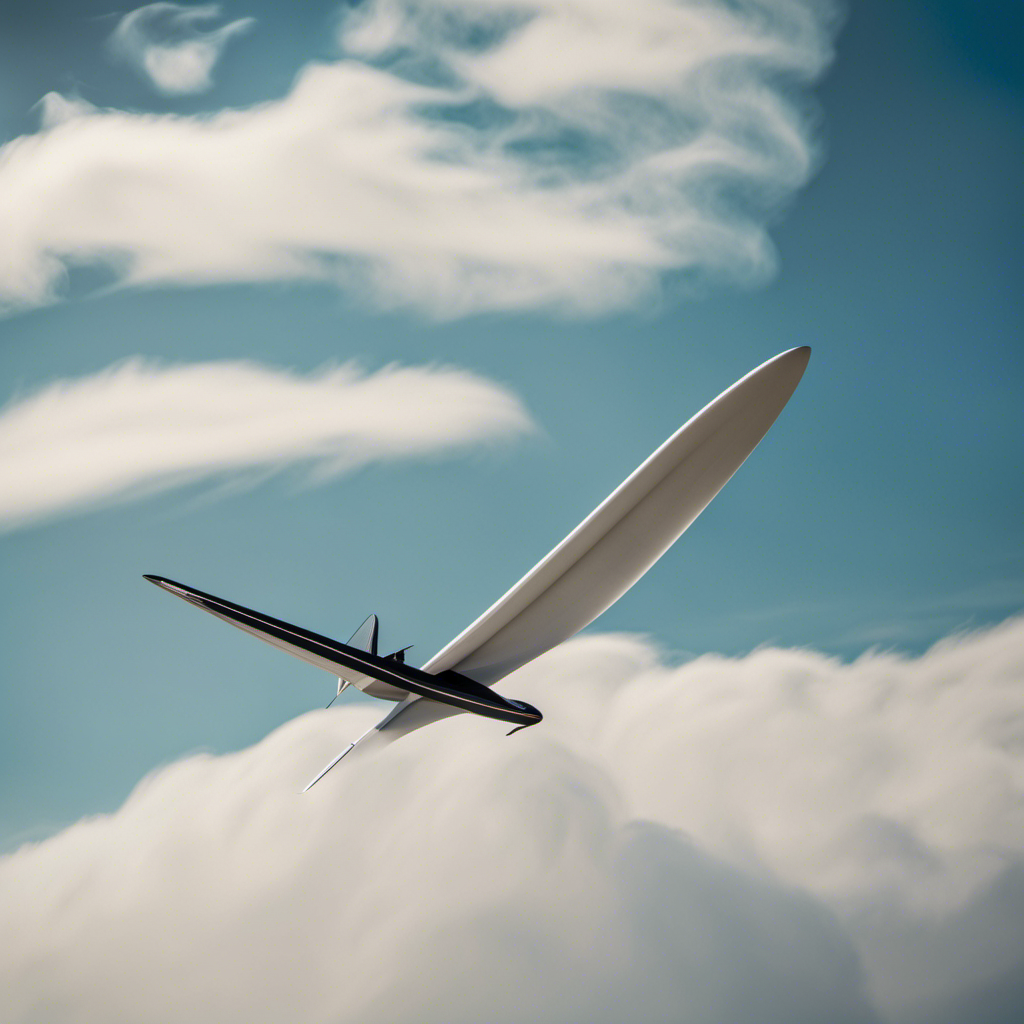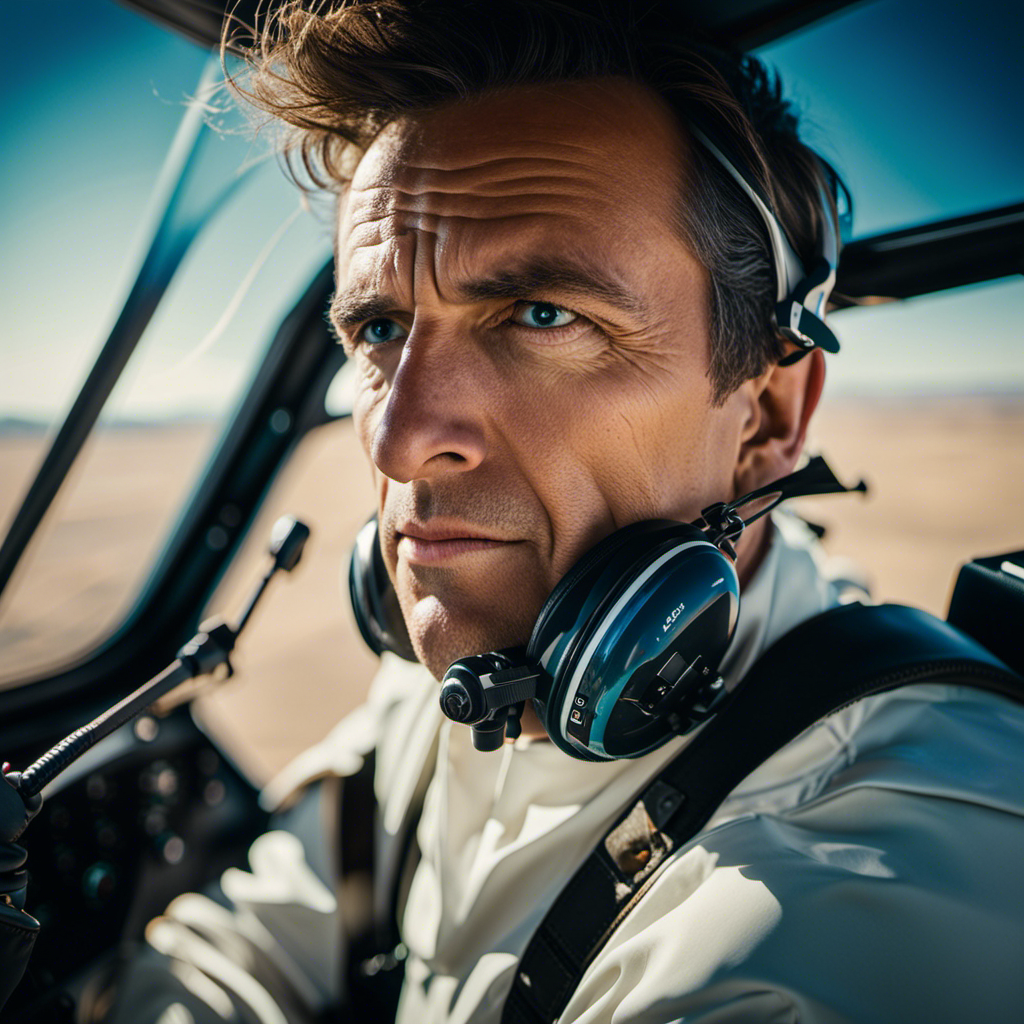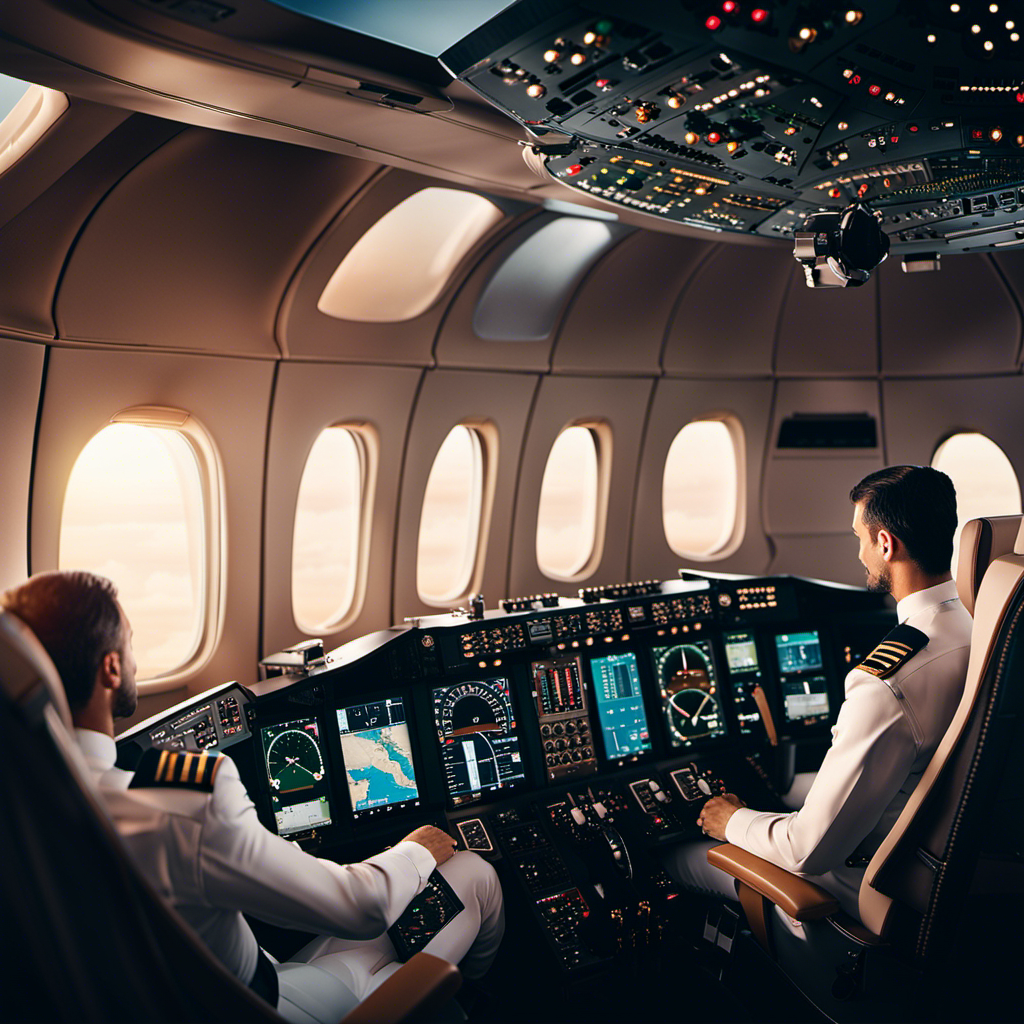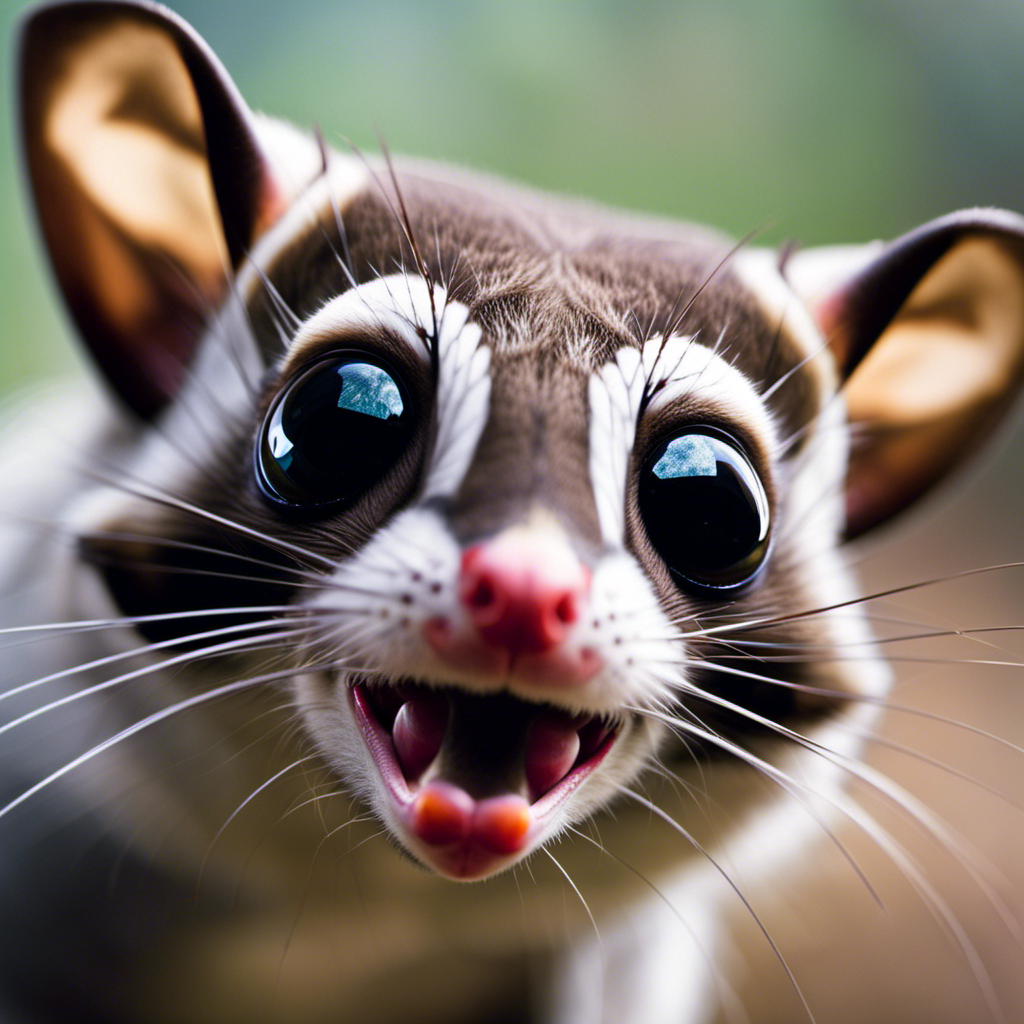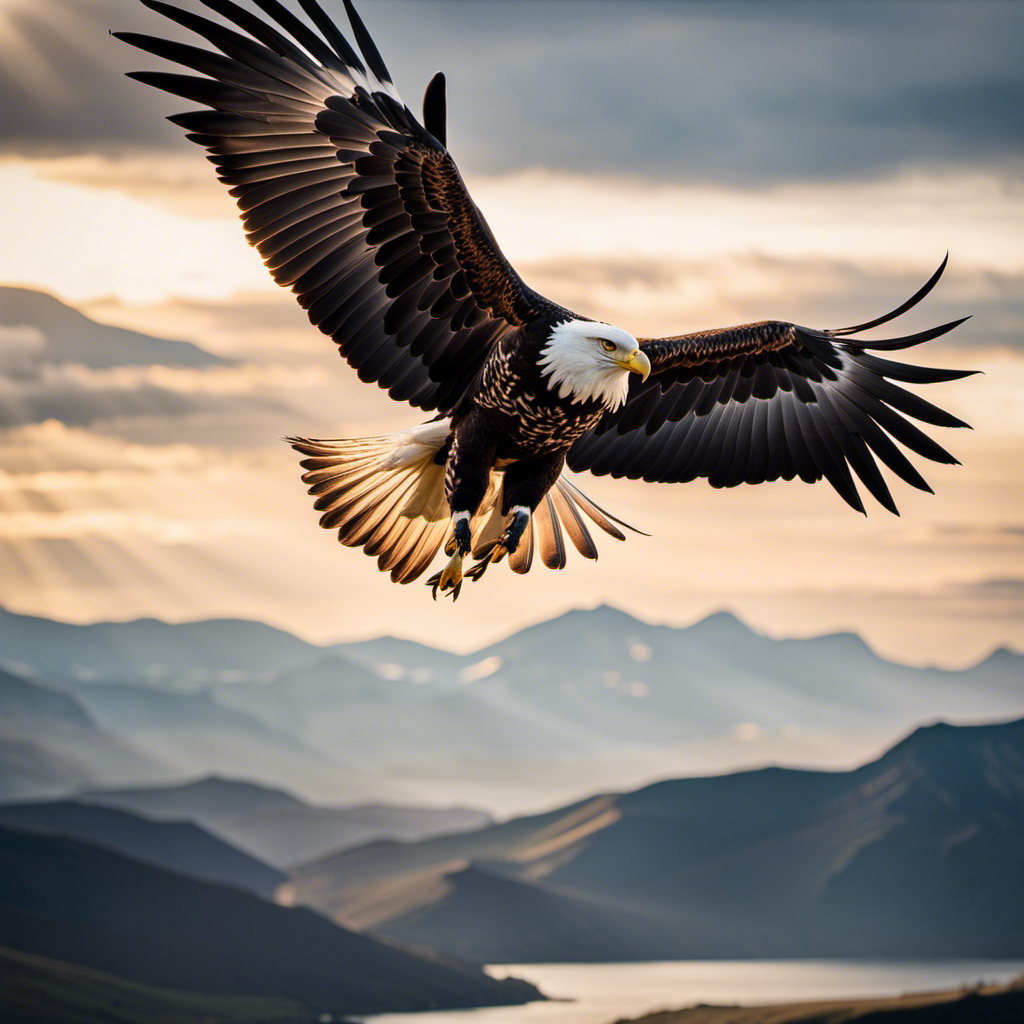As a glider pilot, I have always been fascinated by the mystery of how a glider can travel long distances. It requires a complex combination of factors working together to increase the flight’s distance and duration.
From the design of the wings and the principles of aerodynamics, to the skill and technique of the pilot, every element plays a crucial role.
Factors such as weight and balance, weather conditions, glider performance and equipment, flight planning and navigation, maintenance and upkeep, safety and emergency procedures, as well as training and experience, all contribute to the ability of a glider to soar and cover great distances.
In this article, we will delve into each of these aspects, providing valuable insights and knowledge for both aspiring and seasoned glider pilots.
Key Takeaways
- Wing design and aerodynamics play a crucial role in glider performance and the ability to achieve maximum distance.
- Proper flight planning, navigation tools, and weather analysis are essential for successful and efficient flight.
- Regular maintenance, upgrades, and proper storage are necessary to ensure optimal glider performance and longevity.
- Safety procedures, emergency protocols, and continuous training and experience are vital for a successful and safe gliding experience.
Wing Design and Aerodynamics
To make your glider go far, you’ll need to focus on wing design and understanding aerodynamics. The key to maximizing the distance your glider can travel lies in optimizing wing efficiency and reducing drag.
Wing efficiency refers to the ability of the wings to generate lift while minimizing the amount of drag they create. This can be achieved by carefully designing the shape and aspect ratio of the wings. A high aspect ratio, which is the ratio of wingspan to average chord length, allows for longer wings and reduces induced drag. Additionally, a well-designed airfoil shape, with a gentle and smooth curvature, helps to maintain laminar flow over the wings, reducing drag even further.
Understanding and manipulating aerodynamics is crucial in achieving maximum glide distance. By making use of techniques such as winglets, which are vertical extensions at the tips of the wings, you can minimize the formation of vortices and reduce drag. Furthermore, careful attention should be paid to the wing’s angle of attack, which is the angle between the wing’s chord line and the oncoming airflow. Finding the optimal angle of attack will ensure the glider achieves the perfect balance between lift and drag.
Transitioning into the subsequent section about pilot skill and technique, it is important to note that even with the most efficient wing design and understanding of aerodynamics, the glider’s performance ultimately relies on the pilot’s skill and technique.
Pilot Skill and Technique
You can improve your glider’s performance and distance by mastering pilot skills and techniques. As a trained glider pilot, I have learned the importance of honing these skills to achieve optimal results. Here are four key pilot training and maneuvering techniques that can significantly enhance your glider’s capabilities:
-
Energy management: Understanding how to efficiently use the available energy in the form of altitude and airspeed is crucial. By carefully managing these resources, pilots can optimize their glider’s performance and maintain speed and altitude during flight.
-
Thermal soaring: Mastering the art of finding and utilizing thermals, which are columns of rising air, can greatly extend your glider’s range. By detecting and circling within thermals, pilots can gain altitude and increase their flight time.
-
Speed-to-fly: Learning how to fly at the most efficient speed for a given condition is essential. By adjusting the glider’s speed based on wind direction, air density, and other factors, pilots can minimize drag and maximize glide performance.
-
Efficient turning techniques: Properly executing turns is vital to maintain energy and minimize drag. By using coordinated turns, pilots can reduce the induced drag and maintain a smooth flight path.
By mastering these pilot skills and techniques, you will be well on your way to optimizing your glider’s performance and distance.
Now, let’s transition to the next section, where we will delve into the importance of weight and balance in achieving long glider flights.
Weight and Balance
Achieving proper weight and balance is crucial for optimizing the performance and range of your glider. The weight distribution of your glider plays a significant role in its overall flight characteristics. It affects the stability, maneuverability, and efficiency of the aircraft.
To ensure proper weight distribution, it is important to carefully load the glider with the appropriate amount of ballast. The center of gravity (CG) is another critical factor to consider. The CG is the point at which the glider’s weight is concentrated. It determines the glider’s stability and handling characteristics.
To achieve the desired CG, you must carefully calculate the weight and position of each component in the glider. This includes the pilot, equipment, and fuel. By properly balancing the weight and positioning the CG within the specified limits, you can optimize the glider’s performance and range.
This will allow you to take full advantage of its capabilities and maximize your flight time. Now, let’s move on to the next section, where we will discuss the impact of weather conditions on glider performance.
Weather Conditions
The weather conditions greatly affect how well a glider performs during flight. As a glider pilot, I rely on accurate weather forecasting to plan my flights and maximize performance. Understanding the atmospheric conditions is crucial for finding thermals and lift, which are essential for sustaining and gaining altitude.
To illustrate the impact of weather conditions on glider performance, let’s take a look at the following table:
| Weather Factor | Effect on Glider Performance |
|---|---|
| Wind Speed | Determines groundspeed and glide ratio. Strong headwinds can slow the glider down, while tailwinds can increase speed. |
| Air Temperature | Affects air density, which influences lift and glide performance. Colder air is denser, providing more lift. |
| Cloud Cover | Determines the availability of thermals. Clear skies allow for strong thermals, while overcast conditions can limit lift. |
| Humidity | Affects the stability of the air mass. Dry air tends to be more thermally active, providing better lift opportunities. |
By analyzing these weather factors, I can make informed decisions during flight planning and adapt my strategies to maximize glider performance.
Considering the impact of weather conditions on glider performance, it becomes clear that understanding the weather is vital for a successful flight. However, weather is just one aspect of optimizing glider performance. Next, we will explore the influence of glider equipment and pilot techniques.
Glider Performance and Equipment
When it comes to glider performance and equipment, having the right gear can greatly enhance your flying experience. One important factor to consider is wing loading. Wing loading refers to the weight of the glider divided by the wing area. A lower wing loading means the glider can fly at slower speeds and maintain better control, while a higher wing loading allows for faster speeds and increased performance. It is crucial to find the right balance between wing loading and the glider’s capabilities.
In addition, glider modifications can also play a significant role in improving performance. These modifications can include adding spoilers, winglets, or even changing the shape of the wings to reduce drag and increase lift. By making these changes, the glider becomes more efficient and can fly longer distances with less effort.
Now, let’s shift our attention to launch technique and altitude.
Launch Technique and Altitude
Launching a glider requires proper technique and reaching a sufficient altitude. The launch technique greatly affects the glider’s initial climb rate and the altitude it can reach. There are various launch techniques used in gliding, including aerotow, winch launch, and self-launch using a motorized system. The choice of launch technique depends on factors such as the availability of facilities, weather conditions, and pilot preference.
When it comes to altitude, the higher the glider can climb during launch, the more potential energy it will have for the subsequent glide. Altitude plays a crucial role in glider performance and endurance. By utilizing updrafts and thermals, glider pilots can maximize their altitude gain and extend their flight time.
To illustrate the importance of launch technique and altitude, consider the following table:
| Launch Technique | Altitude (feet) |
|---|---|
| Aerotow | 2,500 |
| Winch Launch | 1,500 |
| Self-launch | 3,000 |
As seen in the table, the self-launch technique allows for the highest initial altitude, providing the glider with more potential energy for the flight ahead. However, it’s important to note that maintaining altitude during the flight requires skillful flight planning and navigation, which we will discuss in the next section.
Flight Planning and Navigation
When it comes to flight planning and navigation, there are two key points to consider: choosing optimal flight paths and utilizing instruments and technology.
In order to maximize efficiency and reach our desired destination, it is crucial to carefully select the most favorable routes that take into account factors such as wind patterns, weather conditions, and terrain.
Additionally, the use of advanced instruments and technology, such as GPS systems and cockpit displays, can greatly assist in accurately navigating our aircraft and ensuring a safe and successful flight.
Choosing Optimal Flight Paths
Choosing the optimal flight path can greatly increase a glider’s range. When it comes to soaring, understanding the dynamics of the atmosphere is crucial. By strategically utilizing optimal thermals and wind patterns, a glider can maximize its efficiency and cover greater distances.
Thermals are columns of rising warm air that can lift a glider to higher altitudes. By identifying and riding these thermals, pilots can gain altitude without using their engines, conserving precious energy.
Additionally, analyzing wind patterns is essential. Pilots can take advantage of tailwinds, which push the glider forward, increasing its groundspeed and reducing the time required to reach a destination.
By carefully considering these factors, pilots can make informed decisions about their flight path and optimize their range.
Transitioning into the next section, using instruments and technology further enhances these capabilities.
Using Instruments and Technology
Using instruments and technology, I can accurately navigate my flight path, making informed decisions based on real-time data and enhancing my overall flying experience. The efficiency of modern instruments allows me to optimize my route and make adjustments as needed, ensuring that I am flying the most efficient path possible.
With advancements in technology, I have access to a range of tools and systems that provide me with valuable information, such as weather updates, air traffic control communications, and aircraft performance data. These tools allow me to stay updated and adapt to changing conditions, improving both safety and efficiency.
By utilizing these instruments and technology, I can confidently navigate the skies and maximize the performance of my glider.
As I transition into the topic of maintenance and upkeep, I understand the importance of keeping my instruments in top condition to ensure their accuracy and reliability.
Maintenance and Upkeep
Regular inspections and servicing are crucial for maintaining the optimal performance and safety of a glider. By conducting thorough inspections at regular intervals, potential issues can be identified and addressed before they escalate into major problems.
Additionally, cleaning and polishing the glider not only enhances its aesthetics but also improves its aerodynamic properties, reducing drag and ensuring a smoother flight.
Regular Inspections and Servicing
When it comes to keeping your glider in top shape and ensuring it goes the distance, don’t neglect regular inspections and servicing.
Inspections are of utmost importance as they allow you to identify any potential issues or wear and tear that may affect the performance of your glider. By conducting thorough inspections, you can catch problems early on and take the necessary steps to address them before they worsen.
Servicing your glider offers a multitude of benefits, such as improving its overall functionality and extending its lifespan. Regular maintenance ensures that all components are in optimal condition, reducing the risk of unexpected failures during flight. Additionally, servicing allows for adjustments and fine-tuning to enhance your glider’s performance.
With regular inspections and servicing, you can maximize the potential of your glider and enjoy safe and efficient flights.
To transition into the subsequent section about ‘cleaning and polishing for smooth flight’, it is essential to maintain not only the mechanical aspects of your glider but also its external condition.
Cleaning and Polishing for Smooth Flight
To ensure a smooth flight, it’s important to keep your glider clean and polished. Proper cleaning techniques and a regular maintenance schedule are essential for optimal performance. Here are some key cleaning techniques to follow:
| Cleaning Technique | Frequency |
|---|---|
| Exterior washing | After each flight |
| Canopy cleaning | Weekly |
| Wing inspection | Monthly |
Regularly cleaning the exterior of your glider will help maintain its aerodynamic efficiency. Removing dirt, debris, and bugs will prevent any drag that may hinder the glider’s performance. Additionally, a clean canopy will provide better visibility and enhance safety during flight. Inspecting the wings monthly ensures there are no signs of damage or wear that could potentially affect the glider’s flight characteristics.
Safety and Emergency Procedures
In case of an emergency, it is important to familiarize yourself with safety and emergency procedures while gliding. Being prepared and knowing what to do in unexpected situations is crucial for ensuring your safety and the safety of others. Here are three important safety and emergency procedures to keep in mind:
-
Safety Equipment: Prioritize wearing the appropriate safety equipment, such as a helmet and a parachute. These items can provide protection in case of a mid-air collision or other emergencies.
-
Emergency Landing: Understand the procedures for executing an emergency landing. This includes identifying suitable landing spots, assessing wind direction, and preparing for a controlled descent. Practice emergency landings during your training to enhance your skills and confidence.
-
Communication: Establish effective communication with ground support or other gliders in the area. This can be done through a radio or hand signals. Clear and concise communication can help in coordinating efforts during emergency situations.
By being well-versed in safety equipment and emergency landing procedures, you can mitigate risks and react appropriately if a challenging situation arises.
Now, let’s delve into the next section, which focuses on the importance of training and experience in maximizing your gliding potential.
Training and Experience
As a certified glider pilot, I understand the importance of continuous learning and skill development in order to maintain and improve my proficiency in flying.
Glider pilots are classified into different certification levels based on their experience and demonstrated abilities, ranging from student pilot to advanced instructor.
These certification levels not only serve as a benchmark for one’s progress, but also as a guide for further training and development in order to become a more skilled and knowledgeable pilot in the gliding community.
Glider Pilot Certification Levels
If you want to become a certified glider pilot, you’ll need to progress through different levels of certification. These certification levels are designed to ensure that pilots have the necessary skills and knowledge to safely operate a glider. The table below provides an overview of the pilot qualifications and flight regulations for each certification level:
| Certification Level | Pilot Qualifications | Flight Regulations |
|---|---|---|
| Level 1 | Beginner with minimal experience | Must fly under the supervision of a certified flight instructor |
| Level 2 | Demonstrated basic flying skills | Can fly solo within a specified area |
| Level 3 | Proficient in advanced flying techniques | Can fly cross-country flights |
| Level 4 | Highly skilled and experienced pilot | Can fly in challenging weather conditions |
As you progress through these certification levels, you will gain more experience and develop your skills as a glider pilot. Continuous learning and skill development are essential to becoming a proficient and safe glider pilot.
Continuous Learning and Skill Development
To continuously improve my skills as a glider pilot, it’s important for me to engage in ongoing learning and skill development. Continuous improvement and skill enhancement are crucial in this field to ensure safe and successful flights.
As a glider pilot, I understand the importance of staying up to date with the latest techniques, technologies, and regulations. By actively seeking opportunities for learning, such as attending workshops, participating in training programs, and studying relevant literature, I can continuously expand my knowledge and refine my skills.
This continuous learning process allows me to stay ahead of the curve, adapt to changing conditions, and make informed decisions while flying. By prioritizing ongoing learning and skill development, I can confidently navigate the skies and achieve greater success as a glider pilot.
Frequently Asked Questions
How much does a glider typically weigh?
A glider typically weighs between 500 to 1000 pounds, with the weight distribution carefully balanced to ensure optimal flight performance. This includes the weight of the glider itself, as well as any payload or additional equipment on board.
What are some common weather conditions that can affect a glider’s flight?
The flight of a glider can be impacted by various weather conditions, such as thermals and wind shear. Thermals, like rising columns of warm air, can provide lift, while wind shear can cause turbulence and affect the glider’s stability.
How often does a glider need to be maintained?
The frequency of glider maintenance depends on various factors such as flight hours, environmental conditions, and manufacturer recommendations. Following a glider maintenance checklist ensures the safety and optimal performance of the aircraft.
What safety procedures should a glider pilot follow in case of an emergency?
In case of an emergency during a glider flight, a pilot should follow safety procedures such as selecting a suitable emergency landing site and initiating emergency communication to alert authorities for assistance.
What kind of training and experience is required to become a glider pilot?
To become a glider pilot, one must undergo extensive training and gain significant experience. Training requirements include completing a glider pilot course and passing exams. Additionally, practical experience is crucial for mastering glider piloting skills.
Conclusion
In conclusion, achieving maximum distance in glider flight requires a combination of technical expertise, meticulous planning, and a deep understanding of the principles of aerodynamics.
Like a skilled conductor leading an orchestra, the pilot must harmonize the intricate dance between the glider and the surrounding air currents.
The glider’s wing design, weight distribution, and equipment play a crucial role in its performance.
However, it is the pilot’s skill, experience, and ability to adapt to changing weather conditions that truly propel the glider to soar like an eagle, effortlessly gliding through the sky.
Orion, better known as “Jetstream,” is the voice that brings the stories of the skies to life. His fascination with aviation began at a young age, sparked by his father’s tales of flying and adventure. Orion’s journey into the world of gliding was serendipitous, and from the moment he took his first glider flight, he knew he had found his calling.
